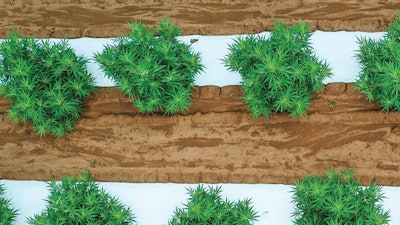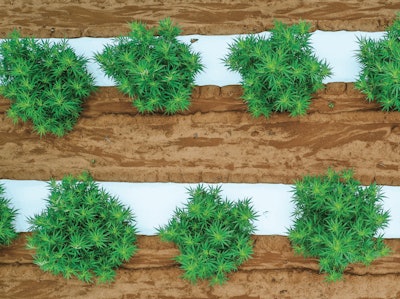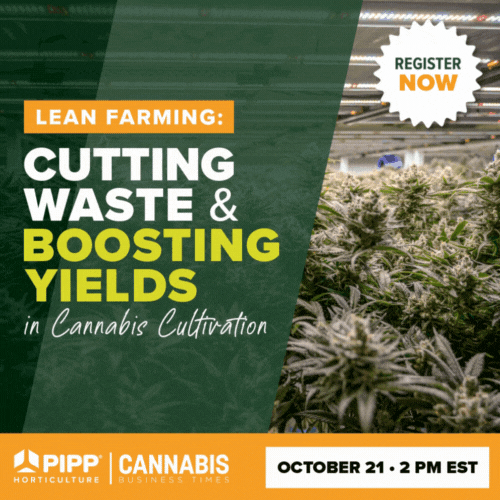

Throughout the country, many farmers are still trying to figure out the best production system and practices to use for growing floral hemp. What works well in one part of the country doesn’t necessarily work in other areas.
In my case, I am located in warm, wet, humid North Carolina, where we have acidic soils that range from clay to sand. My area is also around a latitude of about 35 degrees. So, when I went looking for counsel for my first crop, I turned to university specialists and experienced hemp growers in areas with similar conditions at a similar latitude. I chose Kentucky, Tennessee and Virginia. That worked well for me, especially when I was considering crop density and variety selections appropriate for warm and wet environments.
But one issue that was not resolved was which production system to use.
The two basic systems farmers currently use for floral hemp production are: an open, bare-ground system that relies on good cultivation practices for weed control, and a plasticulture system that uses plastic mulch to control weeds close to the plants. Some variations exist in both systems, but a quick internet search reveals that both systems are being used across the country.
In a bare-ground system, the soil is tilled and usually pulled up into row ridges. Rarely do I see farmers planting on level ground unless they are using a no-till system (which essentially leaves the soil undisturbed before planting a new crop and is a topic for another article). With the bare-ground system, hemp transplants or clones are set in rows on low ridges, and more soil is tilled and tossed around the base of the plant after transplanting, increasing the height of the ridge over the course of the growing season. Overhead or drip irrigation can be used, although overhead irrigation is most common.
The bare-ground system can result in good weed control if the tilling is done in a timely manner. Tobacco farmers often use row ridge systems, and many farmers in tobacco-growing regions are familiar with the system and have the equipment and knowledge to use it.
In a plasticulture system, on the other hand, growers pull up raised beds and apply drip irrigation tape and plastic mulch in one pass with a plastic mulch layer pulled behind a tractor. Black or white-on-black are the two most commonly used mulch colors to block out weeds. The plastic mulch holds in moisture and provides good weed control around the plants, although weed control between the plastic covered beds can still be an issue. Many vegetable and strawberry growers use the plasticulture system.
The Pros and Cons
So, what are some of the pros and cons of each system, and what have we seen in the field?
The bare-ground system is pretty straightforward and effective if you have the proper cultivation equipment and use it in a timely manner. But, if the growing season is exceptionally wet, getting into the field to cultivate in a timely manner may be difficult, and the weeds can quickly get away from you. However, if you can control the weeds with cultivation until the canopy closes, this can be a very effective and inexpensive growing system.
Some of the problems I have observed with the bare-ground system are:
- Farmers not having the appropriate cultivation equipment to maintain the fields.
- Wet soil preventing timely cultivations.
- Excessive weed growth because the hemp canopy didn't shade the soil soon enough.
- Overhead irrigation contributing to fungal diseases and mold.
Plasticulture provides good moisture management and weed control. The drip irrigation keeps the foliage dry and allows for easy, directed fertilization. It is, however, a more complicated system and requires more experienced management than the bare-ground system. If you don’t already own a plastic mulch layer, you need to purchase, borrow or rent one. Plastic mulch and drip irrigation tape are annual expenses, and if you don’t already use drip irrigation, you will need to invest in pumps, filtration, valves, connectors and layflat (distribution lines). You also must dispose of the plastic mulch and drip tape at the end of the season.
Most of the problems I observed with this system occurred because the farmer did not have experience with plasticulture. Many farmers did not provide adequate irrigation, learning too late that rain that fell between the beds did not reach the hemp roots under the plastic. Other growers did not run drip irrigation long enough to provide adequate moisture for the plants to thrive. In 2018, when record-breaking rainfall hit much of the Southeast, raised beds with plastic mulch were a blessing for those with well-draining soil, as they kept the plant roots protected up out of the water. However, they hurt those with compacted soil because they didn’t let the field drain and water evaporate quickly.
Choosing the Right System
Either system will work well in producing high-quality hemp. This conclusion is based on a 2019 study I conducted with my colleague Angela Post, Ph.D., in N.C. State University’s Department of Crop and Soil Sciences, and three years of observations by extension specialists and agronomists in North Carolina. More important to this decision is your skill level with either system, available equipment and/or capital, and whether you have someone to help guide you through a system that is new to you. The sidebar above will help you decide what is best for you and your team.
Jeanine Davis, Ph.D., is an associate professor and extension specialist with North Carolina State University’s Department of Horticultural Science.
















